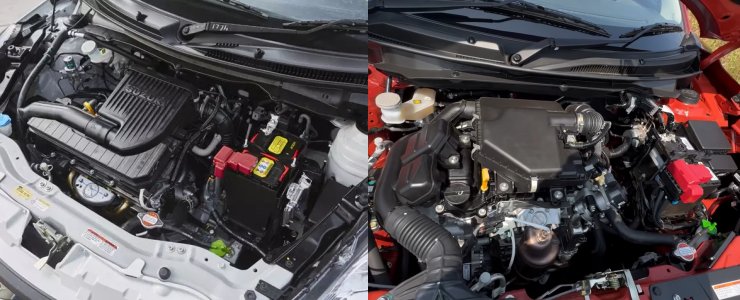All-New 4th Generation Maruti Dzire Vs Old Model: Here’s What’s New!


Maruti Suzuki India Limited, even before the launch of the new fourth-generation Dzire, has managed to win the hearts of many Indian buyers. This time around, the new Dzire has been given an extensive exterior and interior design upgrade. Along with it, the sedan has also received a brand-new interior. Today, we thought we should give you a detailed comparison of the old Maruti Suzuki Dzire and the newest model. So, without any delay, let’s jump right into it.


Starting off at the front, the new Dzire gets a completely new front fascia. This time around, this sub-compact sedan gets a much larger grille, a gloss black centerpiece, beautiful LED headlights, and new fog lights. When compared to the old model, it looks much more aggressive yet stylish and premium.

Not much has changed on the side profile, except for the addition of new multi-spoke black and silver dual-tone alloy wheels. These measure 15 inches and look very sporty.

Coming to the rear-end design differences, the new Dzire gets a much sportier-looking design. It comes equipped with Y-shaped LED taillights, a new rear bumper, and a shark-fin antenna. Overall, the new Dzire is a much better and more premium-looking sedan than the outgoing model.
Coming to the interior, the new Dzire is leagues above the current-generation model. The new Dzire now gets a much more premium-looking interior. The center is dominated by a 9-inch touchscreen infotainment system, and the middle AC vents are now positioned under the screen.

They are now much sleeker as well. As for the automatic climate control system, it now gets similar buttons as other Maruti Suzuki models like the Grand Vitara, Swift, and Fronx. The steering wheel remains the same as before.
Other notable features of the new Dzire are wireless Android Auto and Apple CarPlay, auto-fold ORVMs, a 360-degree camera, rear AC vents, a wireless charger, and cruise control. The new Dzire also gets a segment-first electric sunroof.
The biggest difference between the old-generation Dzire and the new fourth-generation model is the safety rating. On one hand, the old model received a poor 2-star safety rating, while the new Dzire has managed to impress everyone by scoring a perfect 5-star safety rating.
Maruti Suzuki is offering the new Dzire with safety features such as 6 airbags, ABS with EBD, an electronic stability program, hill-hold assist, ISOFIX child seats, reverse parking sensors, and, as mentioned above, a 360-degree camera.
Now coming to the change under the bonnet, the current-generation Dzire comes equipped with a 1.2-liter four-cylinder petrol engine. This motor is capable of producing 88 bhp and 113 Nm of torque. It is offered with both a manual as well as an AMT gearbox.
On the other hand, the new Dzire gets the company’s newest engine, the Z12E three-cylinder engine. This powerplant is capable of generating 81 bhp and 112 Nm of torque. It will also come with both a 5-speed manual as well as a 5-speed AMT gearbox.

Now, although the Dzire now makes less power than before, it makes up for it by offering better mileage. According to the company, the new generation Dzire will offer a mileage of 24.78 kmpl with the manual transmission, while it will offer 25.71 kmpl with an AMT gearbox.
There will also be a CNG variant that will be launched. Like all CNG engines, it will also make slightly less power. The new Dzire CNG will make 69 bhp and 102 Nm of torque. As for the fuel economy, it is expected to be around 33.73 km/kg.